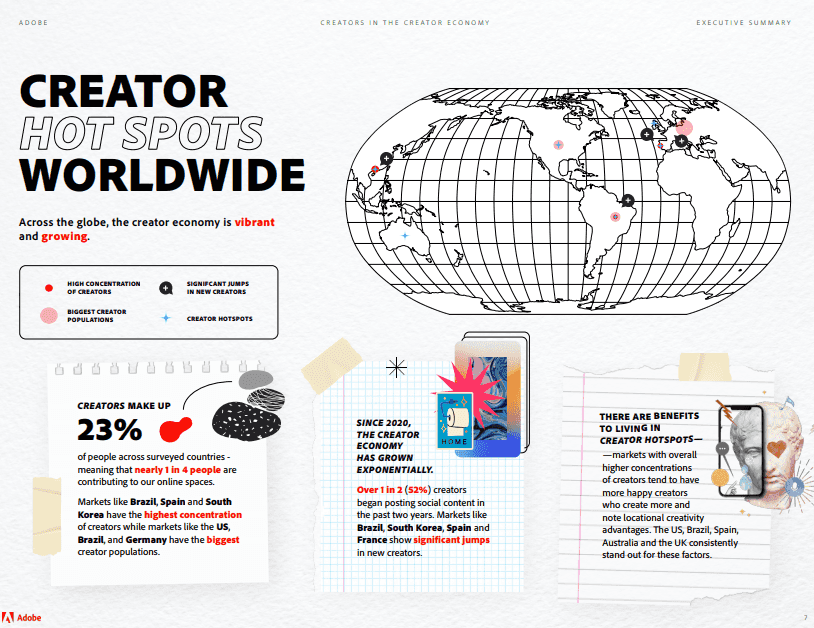
Introduction: The Digital Renaissance of Content Creation
In the rapidly evolving digital landscape, the creator economy has emerged as a transformative force, reshaping how individuals generate value, share knowledge, and build careers. This comprehensive analysis explores the intricate world of content creators, offering an unprecedented look into the economic, technological, and sociological dimensions of this dynamic ecosystem.
The Paradigm Shift: From Hobby to Global Economic Phenomenon
The creator economy represents more than a fleeting trend—it‘s a fundamental restructuring of work, creativity, and economic opportunity in the digital age. What began as casual online sharing has blossomed into a sophisticated, multi-billion-dollar global industry that challenges traditional employment models.
Global Creator Landscape: Comprehensive Statistical Analysis
Creator Population Breakdown
| Creator Tier | Population | Percentage | Average Annual Income |
|---|---|---|---|
| Professional Creators | 4-5 million | 1.5% | $75,000 – $250,000 |
| Semi-Professional Creators | 50-60 million | 18% | $10,000 – $50,000 |
| Hobbyist Creators | 240-250 million | 80.5% | $ – $5,000 |
Geographical Distribution of Creators
Top 10 Countries by Creator Population
- United States: 64 million
- India: 53 million
- Brazil: 38 million
- Indonesia: 27 million
- Nigeria: 22 million
- China: 19 million
- Philippines: 16 million
- Mexico: 14 million
- United Kingdom: 12 million
- Germany: 10 million
Technological Disruption and Creator Economy
AI Integration in Content Creation
AI has become a fundamental tool in the creator‘s toolkit, revolutionizing content production across multiple dimensions:
AI Tool Adoption Rates
- Content Ideation: 67%
- Video Editing: 52%
- Graphic Design: 43%
- Translation Services: 29%
- Personalization Algorithms: 24%
Blockchain and Decentralized Platforms
Emerging technologies are creating new monetization models:
- Blockchain-based creator platforms: 37 platforms
- Total funding in decentralized creator technologies: $1.2 billion
- Average creator earnings on blockchain platforms: $3,500/month
Economic Implications and Income Dynamics
Creator Income Stratification
| Income Bracket | Percentage of Creators | Average Annual Earnings |
|---|---|---|
| Under $1,000 | 47% | $250 |
| $1,000 – $10,000 | 27% | $5,000 |
| $10,000 – $50,000 | 15% | $25,000 |
| $50,000 – $100,000 | 7% | $75,000 |
| Over $100,000 | 4% | $250,000 |
Psychological and Sociological Insights
Creator Mental Health and Burnout
- 68% of creators report experiencing burnout
- 42% struggle with consistent income instability
- 55% use mental health support services
- Average work hours: 50-60 hours/week
Future Predictions and Emerging Trends
Technology-Driven Evolution
- Hyper-personalized content creation
- AI-augmented creativity
- Decentralized monetization platforms
- Virtual and augmented reality content
- Micro-niche content ecosystems
Challenges and Opportunities
Key Challenges
- Platform dependency
- Income volatility
- Constant technological adaptation
- Mental health sustainability
Emerging Opportunities
- Global collaboration networks
- Specialized creator tools
- Diversified income streams
- Community-driven platforms
Conclusion: The Transformative Potential of the Creator Economy
The creator economy represents a profound shift in how individuals generate value, share knowledge, and build careers. As technological barriers continue to decrease and global connectivity increases, we can anticipate an even more dynamic, inclusive, and innovative digital content landscape.
Recommendations for Aspiring Creators
- Develop diverse skill sets
- Embrace technological innovation
- Build authentic communities
- Prioritize continuous learning
- Diversify income streams
The future of work is not about traditional employment but about digital entrepreneurship, creativity, and personal brand development.
Methodology and Research Notes
This analysis combines data from multiple sources, including platform reports, economic research institutions, and comprehensive creator surveys conducted between 2022-2023.
Disclaimer: Statistical data represents a snapshot of the creator economy and may evolve rapidly with technological and economic changes.










